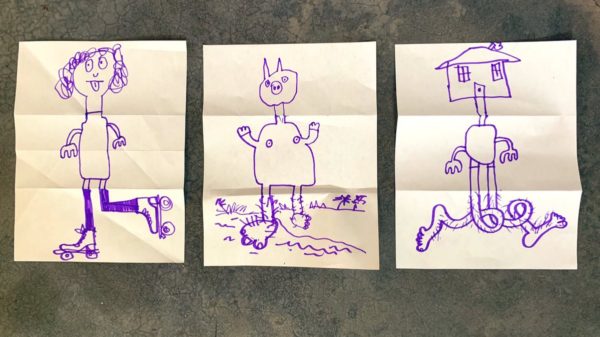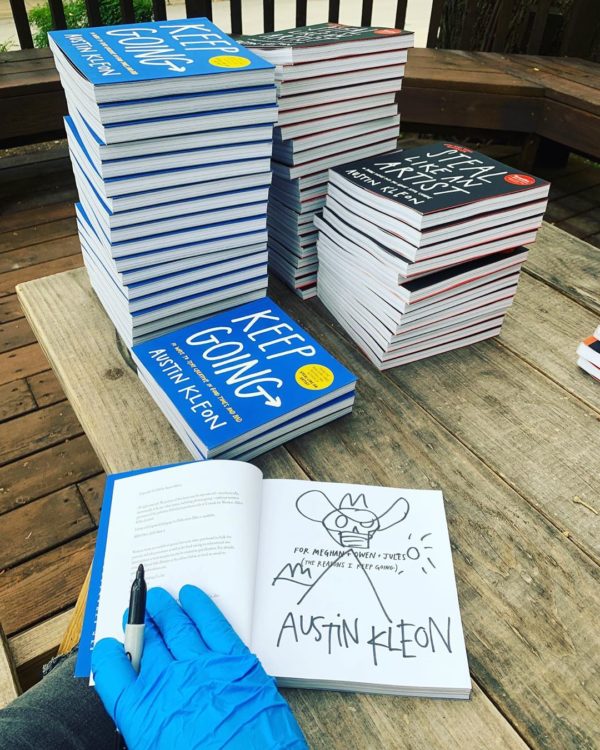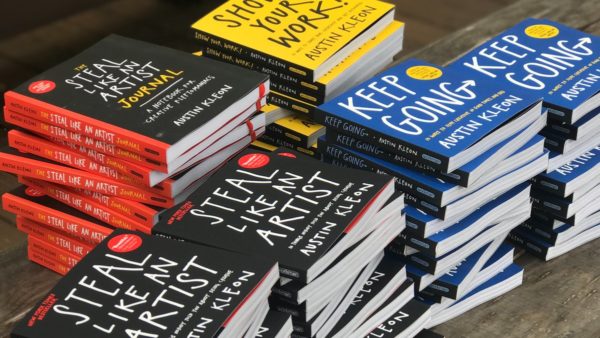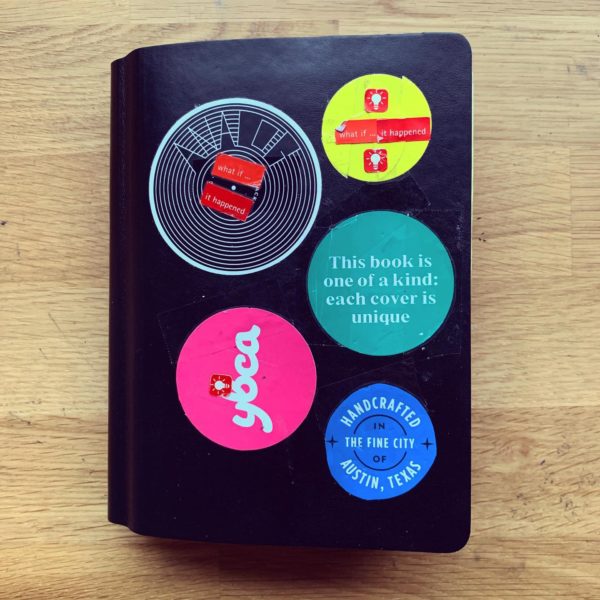
Here is a peek inside the second diary I’ve completed since we went into lockdown in March. It runs from May 2nd to July 2nd, exactly two months long. (That rarely happens!)
If you follow along with this blog, many of these pages will be familiar, but I think it’s interesting to see pieces in their original context. People often ask me of what use is my diary. If you follow the links I’ve included under many of the posts, you can see just how much of this blog comes directly from my daily diary work.
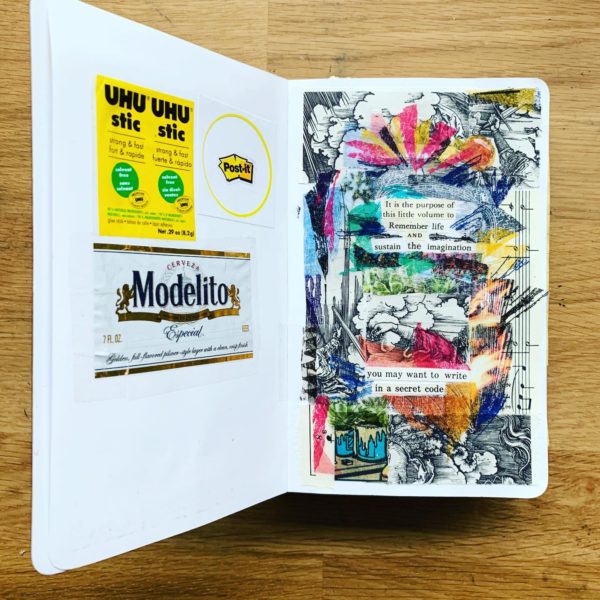
Here is a closer look at this collage, which I made to set the tone.
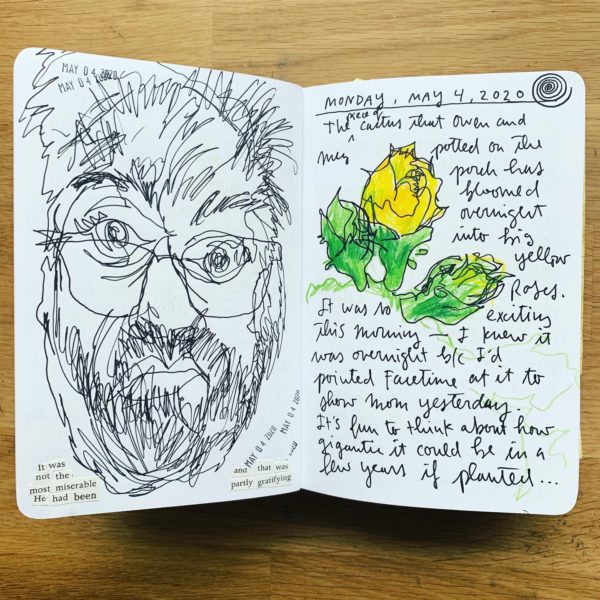
I spent a good part of spring obsessed with the blossoming of our cactus plants out back.

This collage was the real beginning of my house collages for Meg. The drawing was part of my series of 100 blind self-portraits.
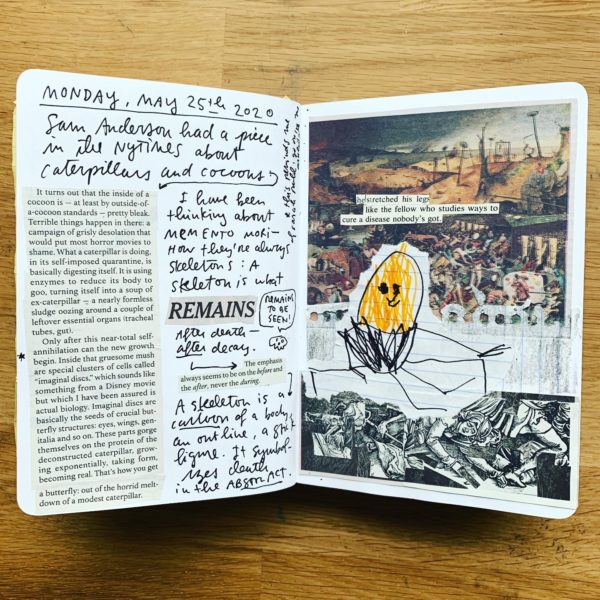
I wrote more about Sam’s piece in the post, “Advice from a Caterpillar,” and here are more Humpty Dumpty collages.
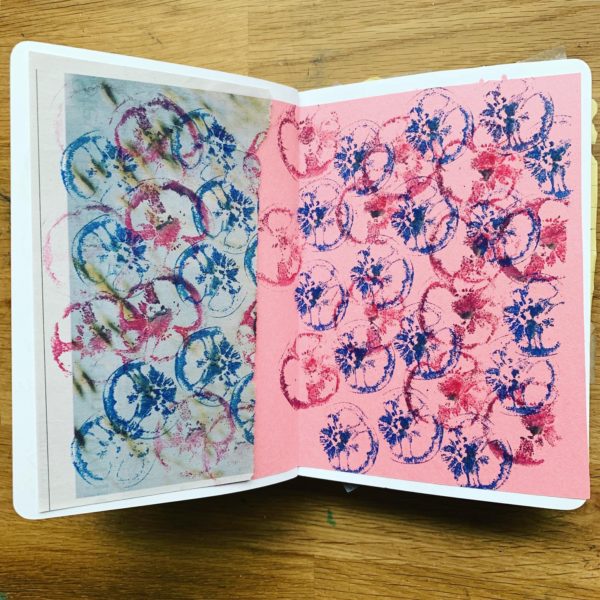
Printmaking… with vegetables!
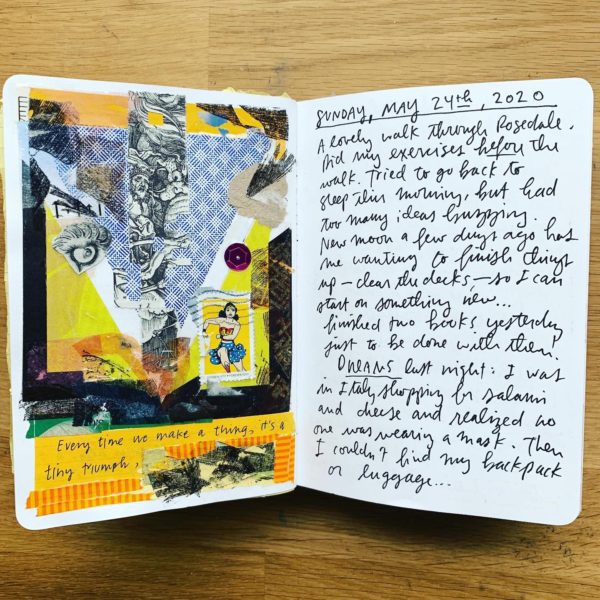
Every time we make a thing, it’s a tiny triumph.

Another house for Meg. (I made two dozen of these in this notebook.)
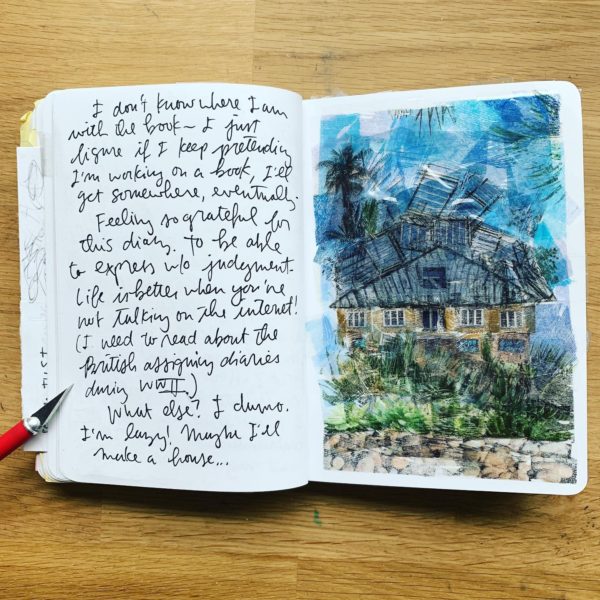
And yet another, with thoughts on how important keeping a diary is to me.

Usually I put guardian spirits in the front of my notebook, but this nun (who I gave sunglasses and cool hair) hung out in the back, maybe to egg me on.
Now it’s time to hold a weigh in and start a new notebook.
